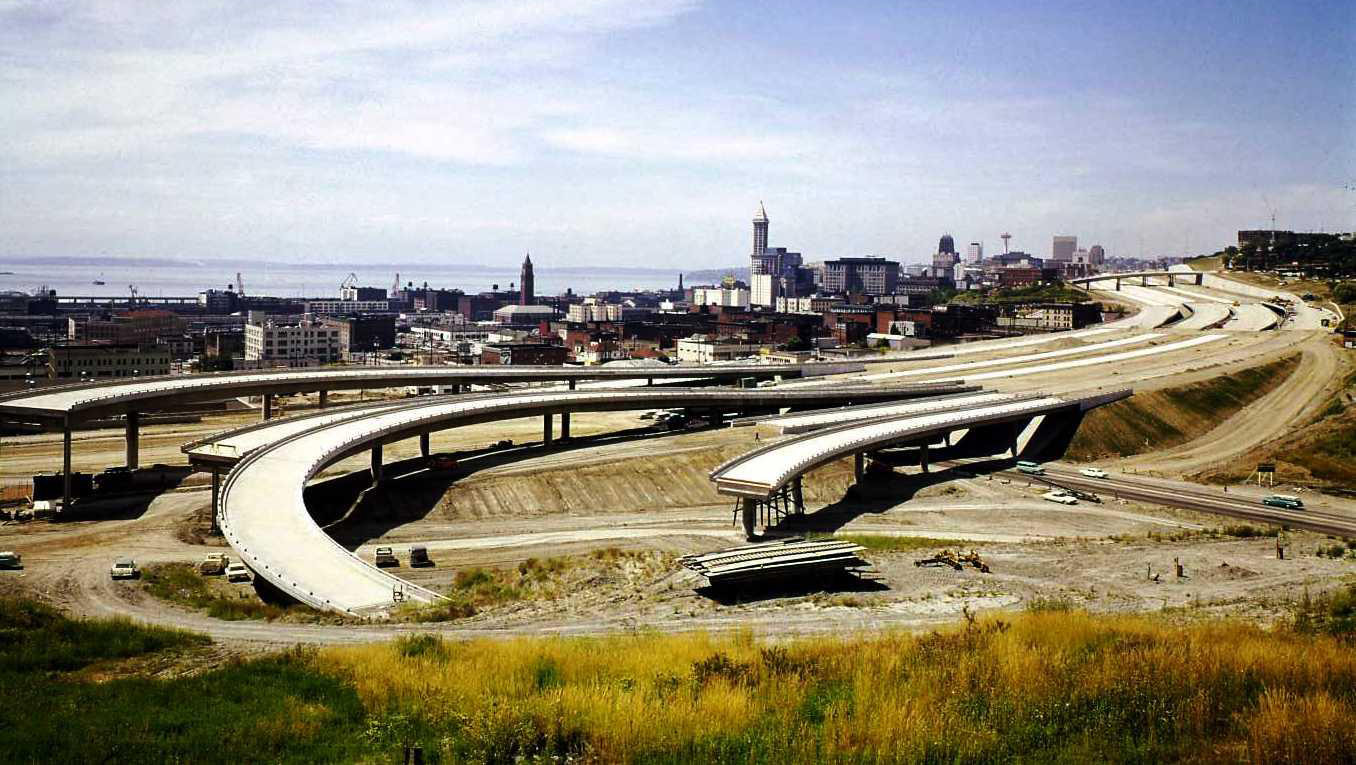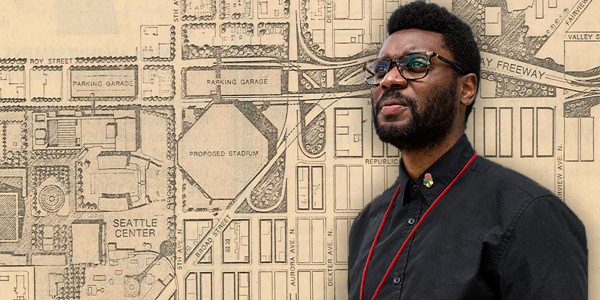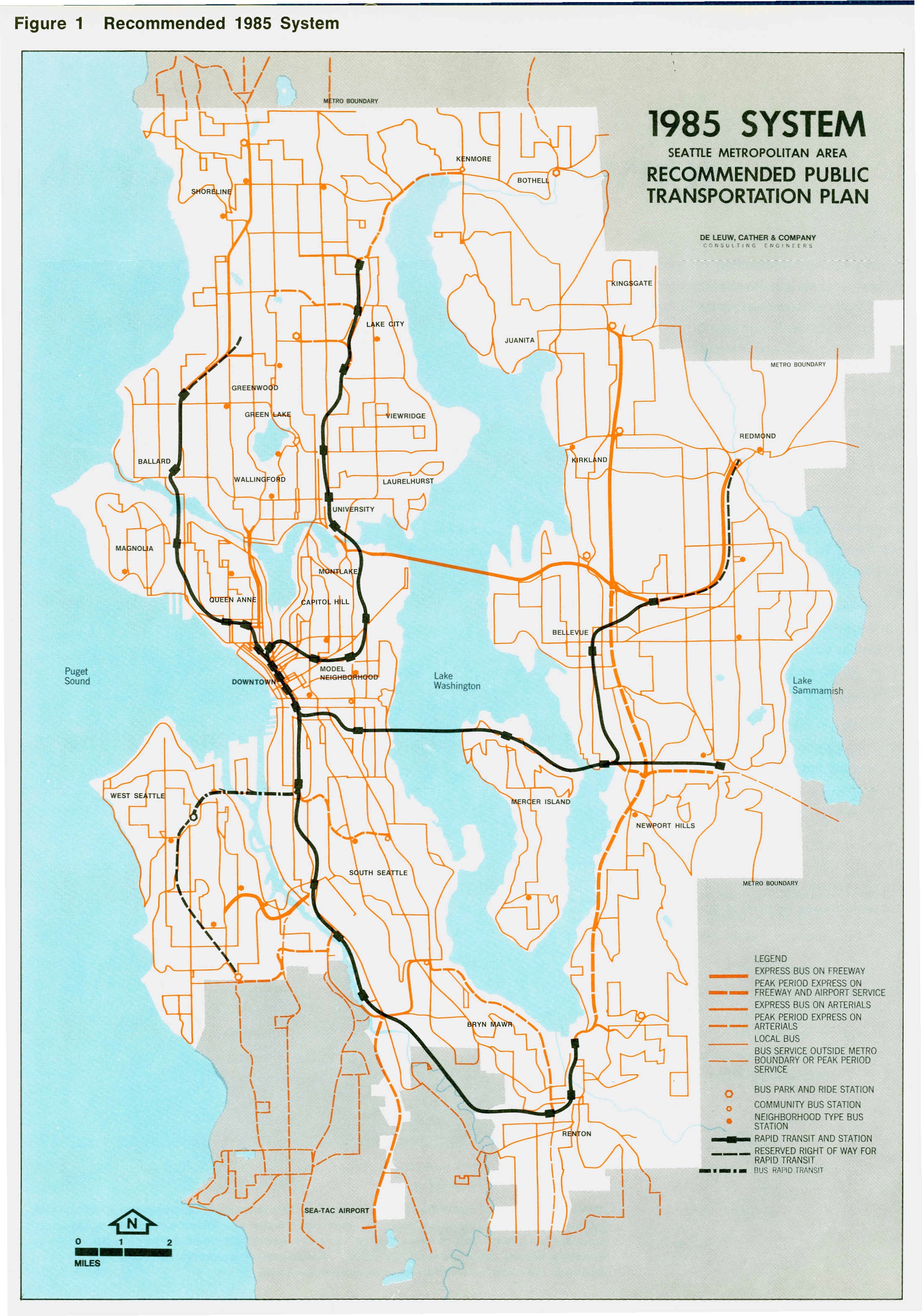
The Forward Thrust bond initiatives of 1968 and 1970 were a success because of their ambition. They were also failures because of their myopia. In this essay—the second installment of a four-part series I’m proud to have published here in The Urbanist—I want to take a look at the demographic tensions and political constraints which etched Forward Thrust ineffably into our civic fabric. Somehow, these same forces also consigned it to the ash heap of big, unfinished ideas. Somewhere in between those two extremes, we should learn to see ourselves.
It’s hard to look out at Seattle’s landscape—both physical and metaphysical—and not see the impact of Forward Thrust. An electoral slate of 11 bond initiatives and one property tax levy, the 1968 and 1970 Forward Thrust measures were a massive investment of money, effort, and imagination that changed the social, environmental, and cultural fabric of Seattle forever. Showing the sheer size of Forward Thrust’s fiscal endowment with numbers adjusted for inflation (a rate of 7.33:1 when comparing 2018 dollars to 1968) gives a sense of the program’s scale and ambition.
- The $865 million parks and recreation bond left the Seattle area with 4,776 acres of parkland, including Seattle Aquarium, Hing Hay Park in the International District, and downtown’s resplendent Freeway Park (later christened Jim Ellis Freeway Park, after Forward Thrust’s political mastermind, Jim Ellis).
- The impact of the $293 million “multi-purpose stadium” bond are evidenced at least eight days a year in autumn and winter and another 81 times in spring and summer, as they were responsible for bringing the Seattle Seahawks and Mariners to town with the now-defunct concrete monstrosity known as the Kingdome (much more on this in the next installment of this essay series).
- Even the failed $22 million public housing measure, which provided funds towards a “land bank” to be used by Seattle for the purpose of purchasing land that it would later redistribute to developers interested in erecting affordable housing, lives on as an innovative idea in urbanist circles nationwide.
Most of the Forward Thrust measures were not ends-in-themselves, but enticements calculatedly conjured by Jim Ellis to bolster his brainchild: the $2.8 billion public transportation bond that would have left Seattle with a 47-mile, 30-station subway system due to be completed by 1985. The point of placing the stadium and public housing levy on the Forward Thrust slate in 1968 was to make the transit bond popular-by-association. Senators Warren Magnuson and Henry Jackson did their parts to help cause, securing a $6.5 billion federal appropriation for the construction of the subway, pending the approval of a county vote. However Ellis’ ploy failed in 1968, with the transit bond garnering only 50.2% of the vote (county measures require a 60% majority to pass).
Seattle mayor James Brama rallied Ellis for an encore, only to have the measure fail yet again in 1970. The federal appropriation for public transit was re-routed to Atlanta, where construction began on the city’s MARTA line.
While many of the secondary and tertiary Forward Thrust measures passed, Seattle transit enthusiasts were stuck at the intersection of fatigue and defeat. Forward Thrust had succeeded; Forward Thrust had failed.
##
Let’s start with the good news.
Forward Thrust managed to convince tens of thousands of voters that problems created by America’s post-WWII march to prosperity were not impersonal and abstract, but completely within the realm of political solvability. With a baseline of economic stability established after federal spending for World War II halted the Great Depression, much of Seattle’s civic discourse in the 1950s and 1960s turned towards questions about the region’s future. Chief among these were environmental concerns that cut to the heart of a car-centric capitalist economy built on cycles of mass production, accumulation, consumption, and waste.
Dozens of open landfills, including an epic dump in the Montlake area that did not close until 1971, dotted the city’s landscape in this period. The region’s waterways were sullied by human and industrial waste. Traffic on the newly constructed I-5 expressway became a signpost for anxieties about population growth and air pollution. Using tried-and-true campaign techniques like canvassing, campaign brochures, radio and newspaper ads, and earned media, the Forward Thrust Committee—stewarded by attorney Jim Ellis—convinced voters that these blights could be addressed with decisive political action.

Amazingly, Ellis was adept at convincing suburbanites that his urbanist vision of mass transit and more public parks was worth pursuing. In her 1974 University of Washington Ph.D. thesis paper about Forward Thrust, Suzanne Vandenbosch summarizes voter data from the 1968 election, revealing that Forward Thrust outperformed among “Suburban Fringe” voters relative to their Seattle counterparts by at least 4% on every individual measure, and by an overall mean of 7%.
According to 1970 census data, 54% of Bellevue residents owned two cars, and another 33% owned at least one; but if the countywide Forward Thrust election of 1968 were restricted to Bellevue voters alone, mass transit would have passed by a 62-38 margin. Vandenbosch notes that voters in the “white collar suburb of Bellevue” composed Forward Thrust’s strongest municipal bloc, with voter turnout there outperforming the county as a whole by 7.8% (58.8% turnout in Bellevue versus the county mean of 51%, and the Seattle mean of 50.5% for the 1968 Forward Thrust election). Apparently, many of those who led the Puget Sound region’s suburbanite march saw its limits most clearly.
But Forward Thrust also resonated with poor Seattleites—African-Americans in particular. In the 1968 election, Forward Thrust outperformed among Black Seattleites relative to Seattleites as a whole on every individual measure, and by an overall mean of 8.4%. The measures for community centers (+11.4%), rapid transit (+11.3%), and the affordable housing land bank (+16.2%) were particularly popular among Black Seattle voters relative to the general Seattle electorate. Had the measure for rapid rail transit been restricted to Black voters in 1968, it would have passed by an even 60-40 margin.
True to national trends, recently enfranchised Black voters were more likely to support social programs—like Forward Thrust—that benefit society as a whole. Relatedly, class and race were key electoral determinants in Forward Thrust’s dual legacies of failure and success.
Forward Thrust’s rapid transit measure was most popular among county voters making less than the 2018 equivalent of $53,000 a year (52% of this bloc voted yes) and among voters making more than the 2018 equivalent of $79,500 (56.8% approval). While Forward Thrust was popular in upper-middle class affluent Bellevue, it floundered in blue collar Renton, with Vandenbosch concluding that an economically insecure petty bourgeoisie is less likely to support social programs than poor people and also less likely to be as forward thinking as people with more money.
Meanwhile, Ballard voters of Scandinavian descent did not show strong support for Forward Thrust. Every individual Forward Thrust measure underperformed among these voters relative to the Seattle electorate as a whole, and by an overall mean of -7%. Rapid transit (-9%), community centers (-10%) and the low income housing land bank (-8%) were particularly unpopular among white Ballardians—an unfortunate ancestor of the neighborhood’s performative hostility towards affordable housing at a recent city council hearing on the topic.
Additionally, some research Asian Americans in Seattle were generally unenthused about Forward Thrust. Precinct data shows that census tracts with large Asian American populations in the International District were among the poorest in the city and had the lowest rates of home ownership, but reported lower levels of voter support for Forward Thrust than any comparable Black-dominated precinct in the city. Vandenbosch surmises “this perhaps reflects a lower expectation on the part of the Asian-American community that government programs will meet their needs”—a sad commentary on the long history of racial exclusion aimed at Asian Americans in Seattle, which included mass transit being wielded as an instrument of Japanese American incarceration during World War II.
The Forward Thrust outreach team spent a great deal of time in the 43rd and 46th Legislative Districts of Washington State, which compose some of Ballard, most of Fremont, and much of North Seattle. This investment of time combined with the underperformance of Forward Thrust in those areas and the comparatively high citywide voter turnout for an off-year ballot initiative may lead one to conclude that the Forward Thrust campaign energized its political enemies, inadvertently encouraging more “No” votes.
A program worth a combined $6 billion in debt and taxes, Forward Thrust was a big political target with a big price tag. The rail transit package was particularly vulnerable politically. The fact that the rapid rail lines were funneled largely through downtown meant that the campaign was susceptible to charges of corruption and speculation. And as we’ll see in the next installment of this essay, the fact that Jim Ellis was a bond lawyer for a brokerage firm that stood to gain from the massive municipal debt of Forward Thrust certainly did not help the cause.
A November 1967 issue of King County Democrat ran a cartoon of Jim Ellis surrounded by moneybags atop a caption that read “Forward Lust.” Many King County political operatives were outraged by the cartoon; Forward Thrust was endorsed by practically every vector of establishment, from elected officials to labor unions. But this did not stop The Washington Teamster, which had a readership of 35,000 people in King County, from running op-eds that criticized Forward Thrust as a conflict of interest in the run-up to the February 1968 election.
At the same time, in a January 1968 feature in Seattle Magazine, Ellis complained about being called “a communist” by political opponents like developer Vic Gould. In his memoir Rites of Passage: A Memoir of the Sixties in Seattle, University District radical Walt Crowley reflects on lambasting Forward Thrust as “little more than changing the table linen aboard the Titanic.” On his soapbox as editor of the leftist University District newspaper The Helix, Crowley also decried Forward Thrust as “timid and grossly inadequate” in January 1968.
Forward Thrust was thus torpedoed from both the left and the right. This was a tragically fitting fate for a centrist technocratic scheme dreamt up by establishment moderates who believed in the virtues of political balance.
##
Politically, Forward Thrust existed at the extremes of race and class, achievement and frustration. It was popular among the very rich and very poor. It found a political home in affluent suburbs, and also in Seattle’s downtrodden urban core. People who had the time and luxury to imagine how it would benefit future generations backed it, as did many of those who, for one reason or another, stood immediately to gain from its implementation.
Areas that would be served by rapid transit generally favored it; those that wouldn’t didn’t. Perhaps a rail system that focused more on east-to-west travel without funneling all lines through downtown would have had a better chance of succeeding with the hostile Ballard electorate—or in the University District, where the Forward Thrust committee spent much of its time, but voter turnout was 15.3% points below Seattle turnout generally. But maybe this would have further galvanized the confused voters who somehow saw Jim Ellis as both a greedy businessman and a rabid socialist; Forward Thrust as an octopus of capitalist speculation and also a communist albatross.
Politics is the art of picking sides, and Forward Thrust is responsible for the choices it made on the canvass of the post-WWII Puget Sound electoral map. Dick Page of Forward Thrust’s campaign staff confessed to Seattle Magazine “our organization never once [asked] ‘what are we going to do for the Negro?’ For every person suggesting we give special preference to the Central District, we had two others claiming that the major problem area was the Green River Valley.” Page and his cohort thus concluded that catering to a white enclave in a sparsely populated area of the county would be a better investment of time and attention than appealing to Black voters who were disaffected but nonetheless more numerous and more enthusiastic about Forward Thrust’s core programs.
Even though Black support for Forward Thrust was 8.4% above the municipal mean, Black turnout for the election (42.5%) was 7.7% beneath Seattle turnout as a whole (50.2%). If similar rates of political subcapitalization existed elsewhere in the electorate—particularly among disadvantaged groups—we’re justified in concluding that the white male-centered composition of the Forward Thrust campaign and its steering committee was a political liability. At a November 1965 speech where he commenced the Forward Thrust Effort, Jim Ellis mused that “with the tools of urban design, a regard for human values and plenty of work, we could build one of the great cities of man.”
But as Jeffrey Craig Sanders notes in his 2010 text Seattle & The Roots of Urban Sustainability, it was women—and not “man”—who were the most likely to be excited about Forward Thrust’s downtown-centric focus. A 1968 survey by a civic group called the Central Association revealed that women were twice as likely as men to take the bus, and half as likely to drive downtown. 65% of women surveyed said they “prefer to work downtown,” and revealed that women found downtown more satisfactory for shopping and more convenient than male correspondents. Many members of the Central Association also served on the Forward Thrust committee; the lessons of the survey did not appear to be internalized, as Forward Thrust’s campaign materials made no explicit appeals to women as voters.
At the same time, we can marvel that a steering committee composed of 90% white men and exactly one woman (of over 200 members) was responsible for any electoral success at all. The universalist pretension of Forward Thrust was its greatest strength, appealing to those who had the leisure to believe in a grand vision for society, and also those who couldn’t afford not to.
Jim Ellis Freeway Park remains a great place to go for a walk and ponder why Forward Thrust was a failure. Forward Thrust is dead—long live Forward Thrust!

The featured Seattle Municipal Archive image is of Powell Barnett and three Seattle Parks officials (the white guys).

Shaun Scott
Shaun Scott is a Seattle writer. His book Heartbreak City is available wherever books are sold.

